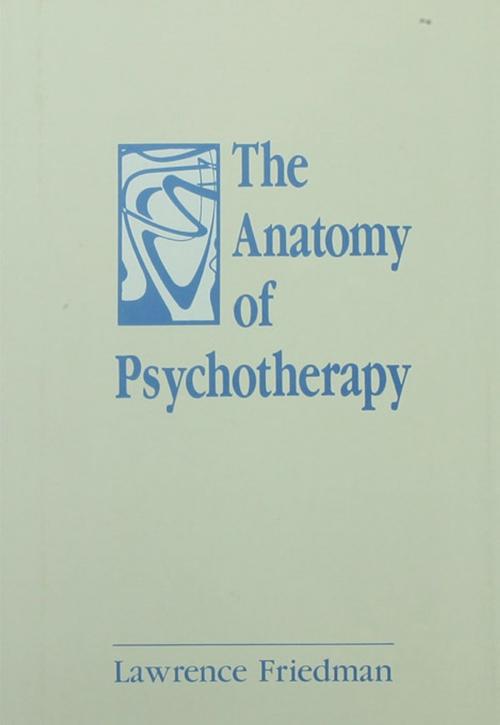The Anatomy of Psychotherapy
Nonfiction, Health & Well Being, Psychology, Applied Psychology, Psychotherapy, Interpersonal Relations| Author: | Lawrence Friedman | ISBN: | 9781134877171 |
| Publisher: | Taylor and Francis | Publication: | May 13, 2013 |
| Imprint: | Routledge | Language: | English |
| Author: | Lawrence Friedman |
| ISBN: | 9781134877171 |
| Publisher: | Taylor and Francis |
| Publication: | May 13, 2013 |
| Imprint: | Routledge |
| Language: | English |
Over the past decades, Lawrence Friedman has emerged as one of the most erudite and provocative theoriss in contemporary psychotherapy. The Anatomy of Psychotherapy interweaves Friedman's major contributions to the analytic and psychiatric literature with extensive new material in arriving at an extraordinarily rich and nuanced appreciation of psychotherapy.
The Anatomy of Psychotherapy describes how the therapist makes use of theories and styles in order to achieve equilibrium under stress. This stress, according to Friedman, is related to the "absolute ambiguity" that is essential to psychotherapy. To cope with this ambiguity, the therapist alternates among three different roles, those of reader, historian, and pragmatic operator. Friedman examines these "disambiguating postures" in detail, paying special attention to their bearing on the therapist's narrative prejudice, the relativity of his knowledge, and the relationship of his work to natural science and hermeneutics.
Brilliantly constructed and masterfully written, The Anatomy of Psychotherapy traverses the same basic themes in each of its six sections. Readers who are interested in theory can hone in on relevant topics or the work of particular theorists. Readers seeking insight into the demands of daily clinical work, on the other hand, can bypass the systematic studies and immerse themselves in Friedman's engrossing reflections on the experience of psychotherapy. Best served will be those who ponder Friedman's writings and therapy as complementary meditations issuing from a single, unifying vision, one in which psychotherapy, in both its promise and frustrations, becomes a subtle interplay among theories about psychotherapy, the personal styles of psychotherapists, and the practical exigencies of aiding those in distress.
Over the past decades, Lawrence Friedman has emerged as one of the most erudite and provocative theoriss in contemporary psychotherapy. The Anatomy of Psychotherapy interweaves Friedman's major contributions to the analytic and psychiatric literature with extensive new material in arriving at an extraordinarily rich and nuanced appreciation of psychotherapy.
The Anatomy of Psychotherapy describes how the therapist makes use of theories and styles in order to achieve equilibrium under stress. This stress, according to Friedman, is related to the "absolute ambiguity" that is essential to psychotherapy. To cope with this ambiguity, the therapist alternates among three different roles, those of reader, historian, and pragmatic operator. Friedman examines these "disambiguating postures" in detail, paying special attention to their bearing on the therapist's narrative prejudice, the relativity of his knowledge, and the relationship of his work to natural science and hermeneutics.
Brilliantly constructed and masterfully written, The Anatomy of Psychotherapy traverses the same basic themes in each of its six sections. Readers who are interested in theory can hone in on relevant topics or the work of particular theorists. Readers seeking insight into the demands of daily clinical work, on the other hand, can bypass the systematic studies and immerse themselves in Friedman's engrossing reflections on the experience of psychotherapy. Best served will be those who ponder Friedman's writings and therapy as complementary meditations issuing from a single, unifying vision, one in which psychotherapy, in both its promise and frustrations, becomes a subtle interplay among theories about psychotherapy, the personal styles of psychotherapists, and the practical exigencies of aiding those in distress.















